Audio Recording Winter Quarter #2
For the week 10 project I recorded a local band called Gourmet. This was a band that liked to have fun and carried a sound quality motto that worse was better. In other words, they wanted a Lo-Fi sound. This was a difficult task considering that we were recording digitally. My preconception was the the point of digital recording is to optimize sound quality and produce a high resolution recording. For me, this was another big learning experience as the nature of the project contradicted my conception of digital recording.
Equipment: Acoustic Guitar: Rode NT-4, RE-15, SM-57 (Overhead) Electric Guitar (Amp): SENN 441, SENN 421 Bass: Direct Input Flute: Rode NT-4 Voice Box/Slide Whistle: SENN 421 Tambourine: SENN 441 Vocals: SENN 441, SM7B, SENN 421
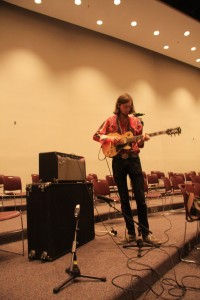 The electric guitar was the heart of the song and because of it’s volume we were experiencing microphone bleeding in the acoustic guitar’s mics. We didn’t want to jeopardize the authenticity of the sound by turning down the amp’s volume, so we built a casing for soundproofing that the amp sat in.
The electric guitar was the heart of the song and because of it’s volume we were experiencing microphone bleeding in the acoustic guitar’s mics. We didn’t want to jeopardize the authenticity of the sound by turning down the amp’s volume, so we built a casing for soundproofing that the amp sat in.
We also experimented with adding a sound proofing wall to interject between the amp and the main microphones picking up the acoustic guitar. Both of this applications ultimately solved our problem and created a sound we were happy with.
We had a surplus of extra microphones, so we set up an exhibit of mics around the acoustic guitar for experimental purposes. We didn’t want to bother the artist, so we made sure that he was comfortable with the setup.
The artists were familiar with the song that we were recording and we had an acceptable take relatively quickly. This opened up time to do the vocal overdubs and add experimental textures.
My favorite part about this project was the impromptu nature of the recording. It made the process intellectually and artistically stimulating and fun. After we had created a foundation from the guitars, bass and vocals we started adding layers of texture. The artists had brought a tambourine, wooden flute, slide whistle and an old voice box modulator. The voice box modulator had a speaker on one end and a microphone on the other. We placed a sound proofing wall on the lip of the stage so that the microphone the artist was playing the slide whistle into and the voice box speaker that was amplifying the sound could be on different sides. We recorded the speaker of the prehistoric voice box so that the raw slide whistle was isolated from the microphone.


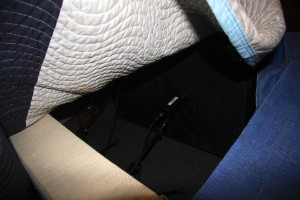
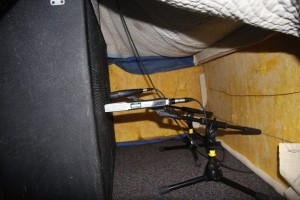

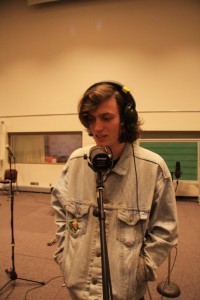


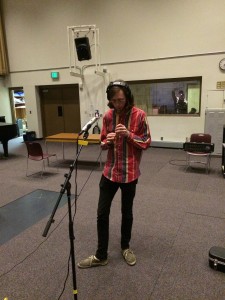
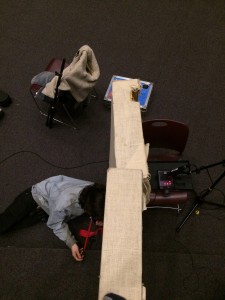
Leave a Reply